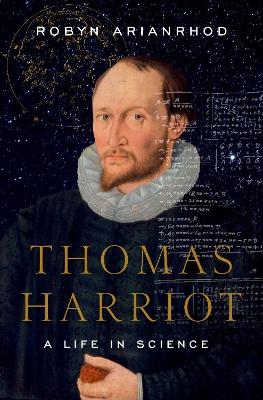
Thomas Harriot
Oxford University Press Inc (Verlag)
978-0-19-027185-5 (ISBN)
Thomas Harriot (1560-1621) was a pioneer in both the figurative and literal sense. Navigational adviser and loyal friend to Sir Walter Ralegh, Harriot took part in the first expedition to colonize Virginia. Not only was he responsible for getting Ralegh's ships safely to harbor in the New World, once there he became the first European to acquire a working knowledge of an indigenous language (he also began a lifelong love of tobacco, which may have been his undoing). Harriot's abilities were seemingly unlimited and nearly awe-inspiring. He was the first to use a telescope to map the moon's craters, and, independently of Galileo, discovered and recorded sunspots. He preceded Newton (whose fame eclipsed his) in his discovery of the properties of the prism. He was arguably the best mathematician of his age, and one of the finest experimental scientists of all time.
Yet Harriot has traditionally remained a tantalizingly elusive character. He had no close family to pass down records, and few of his letters survive. Most importantly, he never published his scientific discoveries, and half a century after his death he had all but been forgotten. In recent decades, many (self-styled "Harrioteers") have become obsessed with restoring to Harriot his right place, but Robyn Arianrhod's biography is the first actually to do this, and she has done it the only way it can be done: through his science. Using Harriot's re-discovered manuscripts, Arianrhod illuminates the full extent of his achievements in science and physics, expertly guiding us through what makes them original and important, and the story behind them. Because he hadn't yet polished them for publication, Harriot's papers also proffer unique insight into the scientific process itself.
Though his thinking depended on a more natural, intuitive approach than those who followed him, Harriot laid the foundations of what in Newton's time would become modern physics. Arianrhod's biography offers the human face of scientific discovery, a lived example of the way in which science actually progresses. Set against the backdrop of the Elizabethan world with all of its dramas and creative tensions--Harriot's years almost exactly overlap those of Shakespeare's--this biography gives proper due to one of history's most remarkable minds.
Robyn Arianrhod is Adjunct Research Fellow at the School of Mathematical Sciences at Monash University. Her previous works include Seduced by Logic and Einstein's Heroes.
Prologue
Chapter 1: Harriot's London
Chapter 2: Sea Fever
Chapter 3: The Science of Sea and Sky
Chapter 4: Practical Navigation (and Why the Winds Blow)
Chapter 5: America at Last
Chapter 6: Preparing for "Virginia"
Chapter 7: Roanoke Island
Chapter 8: After Roanoke
Chapter 9: War, and a New Calendar
Chapter 10: New Chances
Chapter 11: Setback
Chapter 12: Royal Refraction
Chapter 13: Spirals and Turmoil
Chapter 14: Changing of the Guard
Chapter 15: Algebra, Rainbows, and Tragedy
Chapter 16: Solving the Rainbows
Chapter 17: Conversations with Kepler
Chapter 18: Atomic Speculations
Chapter 19: Searching the Skies
Chapter 20: Gravity
Chapter 21: Mathematics, Jamestown, Guiana
Chapter 22: The End of an Era
Chapter 23: All Things Must Pass
Epilogue: Resurrecting Harriot
| Erscheinungsdatum | 08.05.2019 |
|---|---|
| Zusatzinfo | 27 b/w images and figures |
| Verlagsort | New York |
| Sprache | englisch |
| Maße | 234 x 163 mm |
| Gewicht | 635 g |
| Themenwelt | Literatur ► Biografien / Erfahrungsberichte |
| Literatur ► Briefe / Tagebücher | |
| Sachbuch/Ratgeber ► Natur / Technik | |
| Geschichte ► Allgemeine Geschichte ► Neuzeit (bis 1918) | |
| Geisteswissenschaften ► Geschichte ► Regional- / Ländergeschichte | |
| Naturwissenschaften | |
| ISBN-10 | 0-19-027185-X / 019027185X |
| ISBN-13 | 978-0-19-027185-5 / 9780190271855 |
| Zustand | Neuware |
| Haben Sie eine Frage zum Produkt? |
aus dem Bereich


